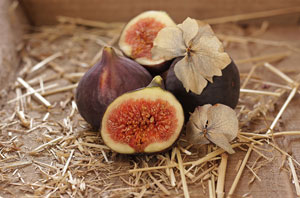The Humarrachos

What is the festivity of Los Humarrachos?
The festivity of Los Humarrachos is a celebration that takes place every year in Berja in honour of its patron saint, San Tesifón. The tradition consists of the residents of the main neighbourhoods of the municipality joining together to collect wood, sticks and other materials to build large bonfires. Once the bonfires are built, they are lit at 21:00 on the night of 31 March, starting the celebration.
During the festival, villagers and visitors gather around the bonfires and enjoy a night of music, dancing and food. Bacon, sausages, beans and wine are usually tasted, in a long night that lasts well into the early hours of the morning. In the Castala neighbourhood, where the hermitage of the patron saint is located, it is customary to set up and light the largest bonfire.
Los Humarrachos is one of the most deeply-rooted traditions in Berja, and its celebration is a moment of great joy and conviviality for the inhabitants of the village.
Origin and brief history
The festivity of Los Humarrachos in Berja has its origins in the 18th century, specifically in 1796. The story goes that the inhabitants of the neighbourhood of Castala, where the hermitage of San Tesifón is located, lit a large bonfire to celebrate the victory against an outbreak of plague that was ravaging the town.
From that moment on, the bonfire became a tradition that has been maintained to this day. Over the years, the festivity has evolved and has been enriched with new elements, such as live music and the tasting of typical local food and drink.
The Humarrachos have become one of the most important and deeply rooted festivities in Berja, and are a time of great conviviality and joy for the inhabitants of the village and for visitors who come to enjoy the celebration. The festivity has been declared of Tourist Interest in Andalusia and is a sample of the rich culture and traditions of the region.
What to see in Berja
Berja is a town located in the province of Almería, in southeastern Spain. These are just some of the places of interest you can visit in Berja:
- Church of the Annunciation: this is the most important church in the town and has an impressive Baroque façade. Inside, the main altarpiece stands out, which is of neoclassical style.
- Castle of Berja: it is located on the top of a hill and from there you can enjoy impressive views of the town and the surrounding area. The castle is of Arab origin and has been restored several times throughout history.
- Casa Palacio de los Torres-Navarra: this is a stately building dating from the 18th century with an impressive Baroque façade.
- Pedro Gilabert Museum: in this museum you can find numerous works by the local painter Pedro Gilabert, as well as by other contemporary artists.
- Ermita de Los Humilladeros: it is located on the outskirts of the town and is the final destination of the Los Humilladeros procession, which is held every year on the first Sunday of Lent.
In addition to these places, Berja has a wide range of gastronomic delights, including dishes such as rice with rabbit and snails and ajopollo, among others.
What to eat in Berja
Berja has a wide gastronomic offer, in which dishes made with quality local products stand out. Here are some of the typical dishes you can try in Berja:
- Ajopolopollo: a stew made with chicken, potatoes, red pepper, garlic and paprika, among other ingredients. It is a tasty and hearty dish that is perfect for cold winter days.
- Rice with rabbit and snails: it is a typical dish of Almeria's cuisine that is made with rice, rabbit, snails, red pepper, tomato and garlic, among other ingredients. This is another very tasty and consistent dish.
- Olla de trigo: it is a stew made with wheat, chickpeas, beans, potatoes, pork and chorizo, among other ingredients. It is a perfect dish for cold winter days and is very comforting.
- Migas: a typical Andalusian dish made with breadcrumbs, olive oil, garlic and paprika, among other ingredients. They are usually accompanied with pieces of chorizo, black pudding or bacon.
- Gachas: a dish made with wheat flour, water, olive oil and salt. They are usually accompanied with sardines or some other local fish.
In addition to these dishes, in Berja you can also taste other local products such as cured ham, goat's cheese, olive oil and local wines.






